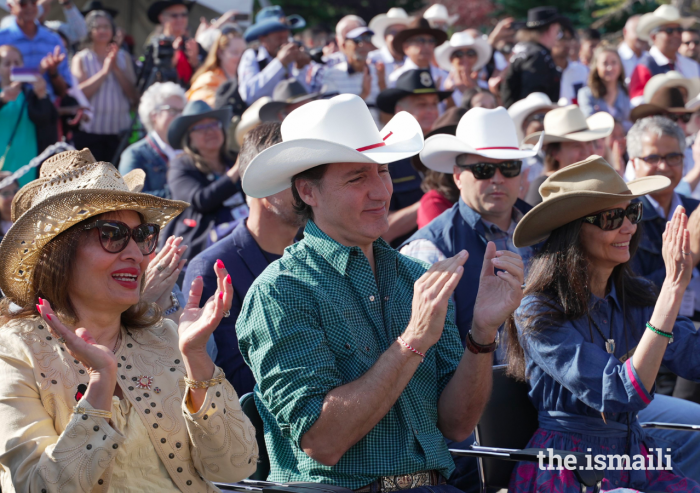“He asked me to go on a big, almost worldwide tour, to visit gardens and parks that are thousands of years old,” says Djurovic. The Lebanese landscape architect explored the Mughal gardens of Humayun’s Tomb and Fatehpur Sikri in India, and the gardens of the Alhambra in Spain.
“I felt the intent was to do something for generations,” says Djurovic. “It’s not something for now only — what do we leave behind?”
The park, which encompasses the Aga Khan Museum and the Ismaili Centre, Toronto, is a fitting gift to an urban centre described as a “city within a park.” On Monday, it will be inaugurated in the presence of Mawlana Hazar Imam as the Aga Khan Park.
The park builds on a long established tradition of Islamic gardens and greenspace, which is an important part of the civic fabric in the Muslim world. Indeed, when Mawlana Hazar Imam’s Fatimid ancestors founded and built Cairo between 969 – 974, some 30 hectares — or 20 per cent of the city — was set aside as space for royal parks, gardens and open spaces of gathering. Whether they take the form of agricultural gardens known as bustan in rural areas, or public parks and private courtyards in more densely populated cities, these outdoor spaces offer quiet respite in which to pause, reflect and gather.
“I cannot imagine cities without parks,” says Djurovic. “It’s a very important role because that’s where you reconnect with nature, that’s where you can really be.” But how does one design an Islamic inspired garden for a decidedly non-Islamic context? “This was a challenge,” he says.
The gardens surrounding Humayun’s Tomb proved to be an important source of inspiration. Recently restored by the Aga Khan Trust for Culture and the Archaeological Survey of India, the quintessential Mughal garden tomb is arranged in a chahar-bagh (four-part) layout that divides the landscape into quarters, which are further subdivided. Each section is separated by raised causeways, with water channels and octagonal or rectangular pools marking the intersections.
Djurovic stresses that while these and other gardens were influential, the Aga Khan Park does not seek to replicate them. “We are in Toronto, we are in the West, in the snow… our main challenge was to try and abstract.” The components of successful gardens are not found in the shapes or forms, he says, but rather in the essence.
The formal elements of the Park capture this essence in their symmetry, geometry and the sensations they create — for example from walking on the loose gravel or the scent of the fruit trees. “And you have the mirrors of water,” says Djurovic. “Water is the main element of an Islamic garden.”
“But here we use them in a very contemporary way,” he explains. The shallow black pools become mirrors that “reflect the dome of the Ismaili Centre prayer hall and the Museum. So you have the culture and the religion and everything is in that garden.”
Between the reflective pools, the soft gravel and the local serviceberry trees, no defining component of the park stands out to Djurovic. “It’s the relationship of everything,” he points out — “it’s what you will feel when everything is right and everything is working together.”
Like so many of the Islamic gardens he toured at the start of his design process, Vladimir Djurovic hopes that the Aga Khan Park will continue to be relevant a century from now. “We’re growing, everything is changing, everything is more contemporary, more modern,” he says, “but the fundamentals are the same.”
“Feeling you are part of a private place, your own sanctuary, in the middle of nature, and berry trees attracting the birds... that will always stay, now and forever.”










